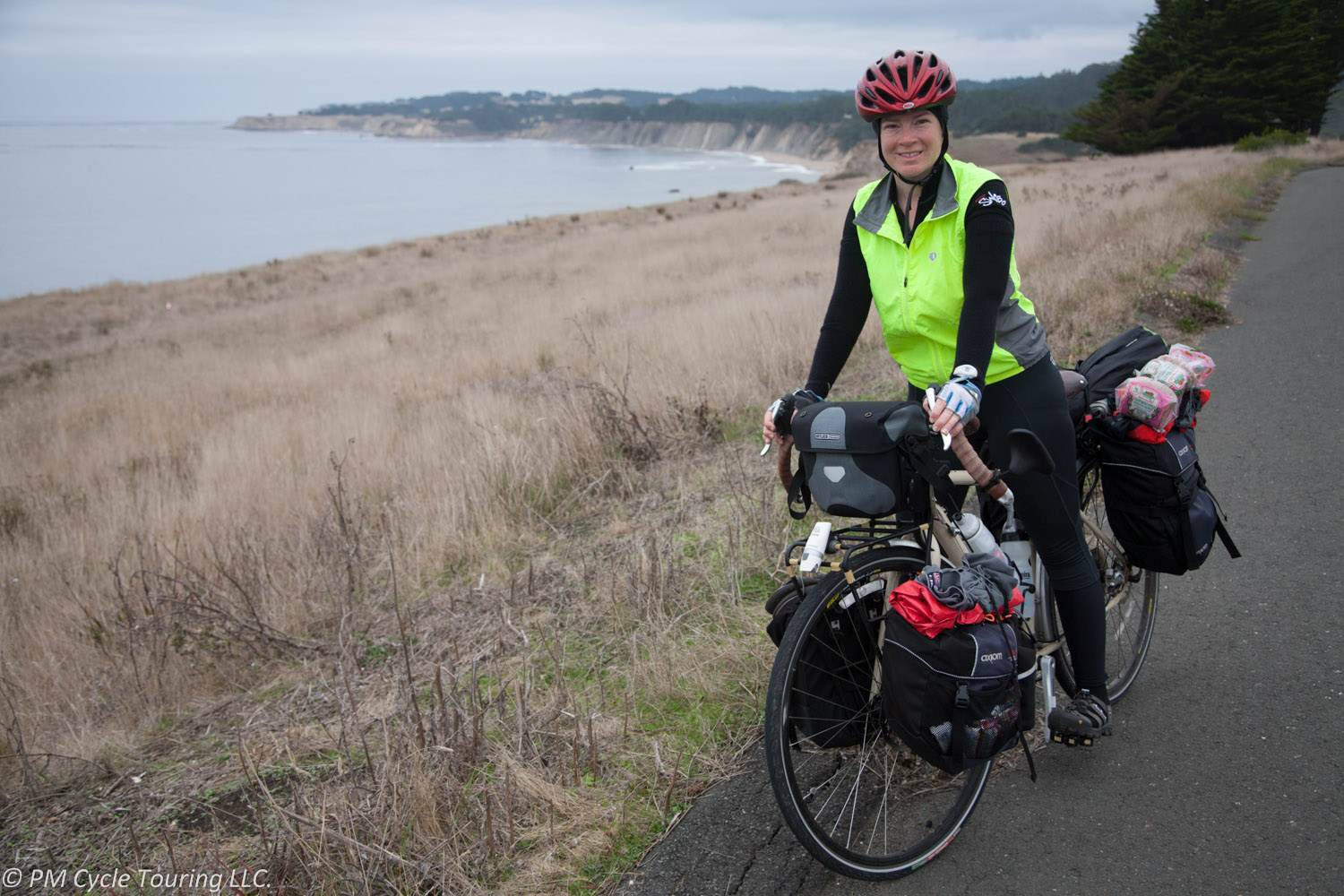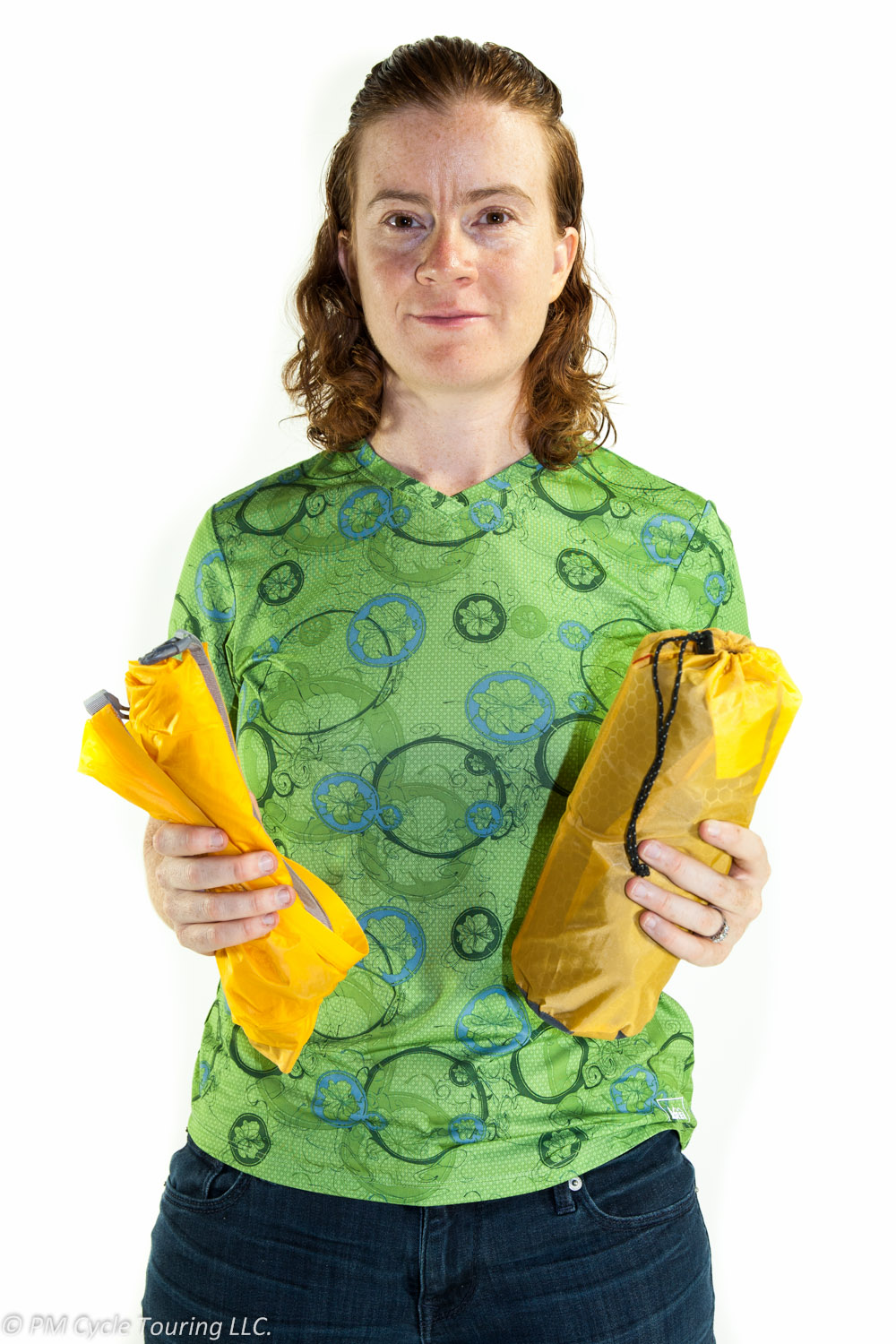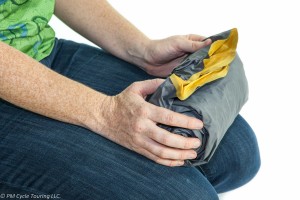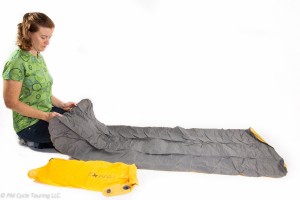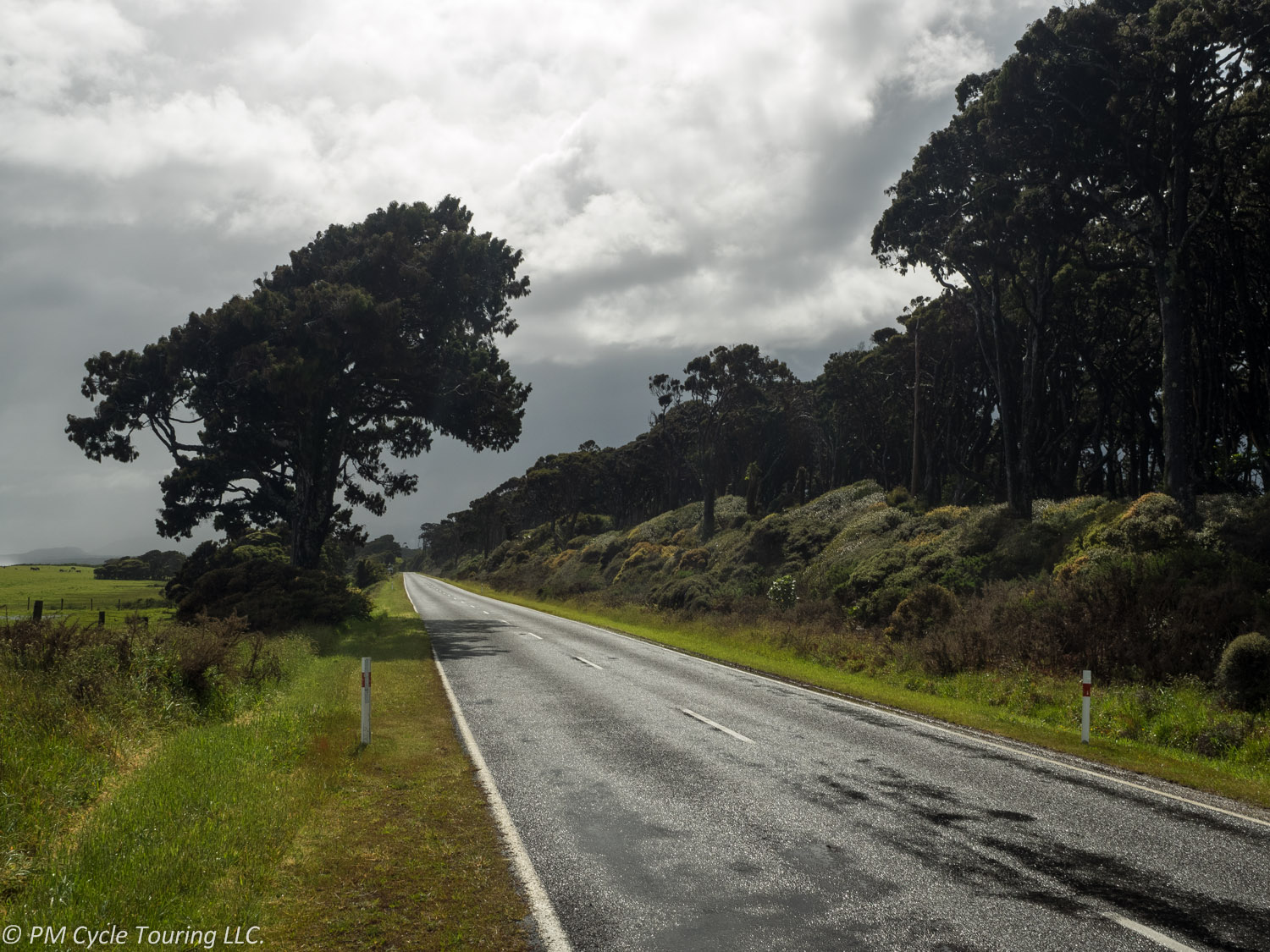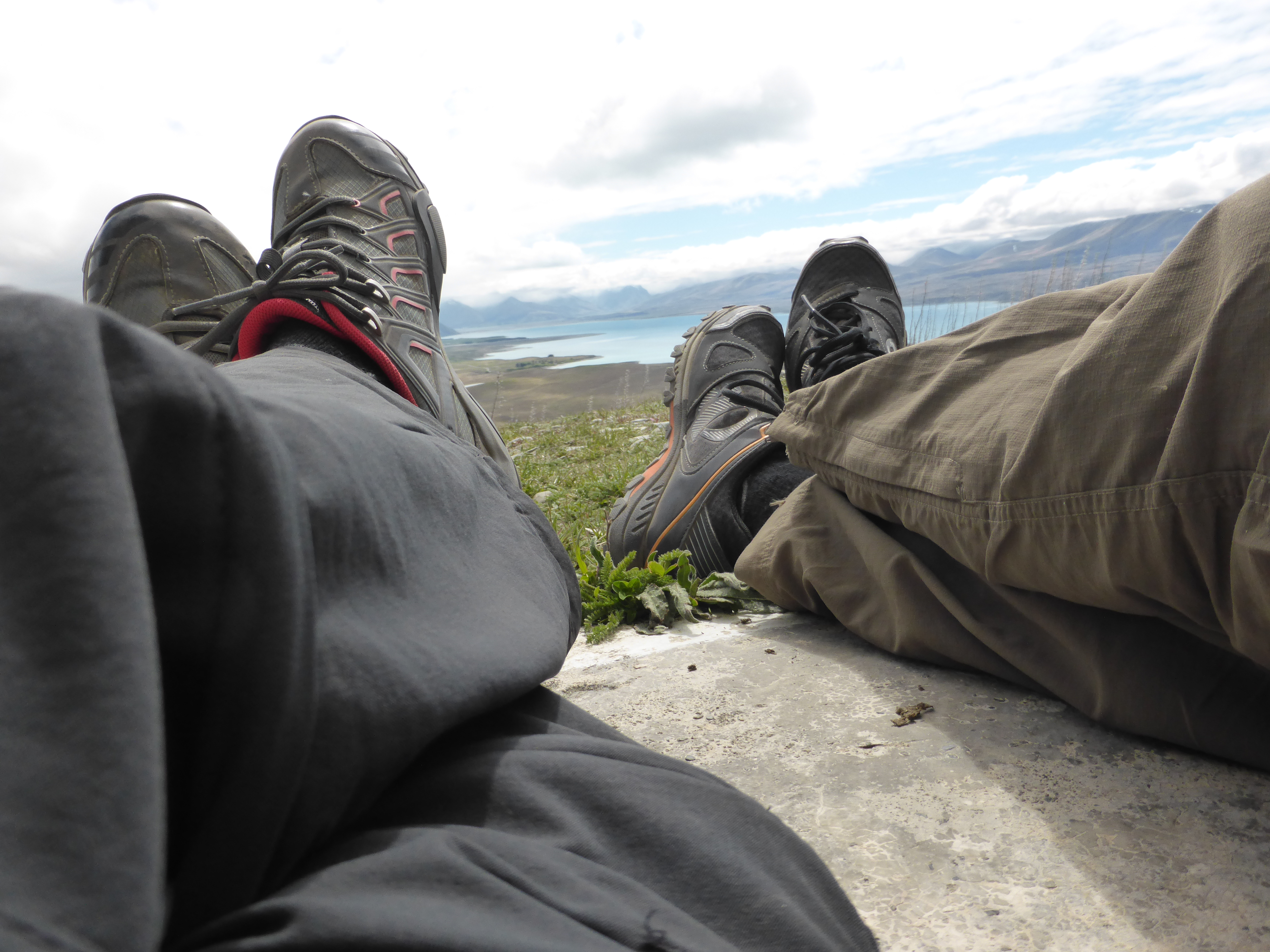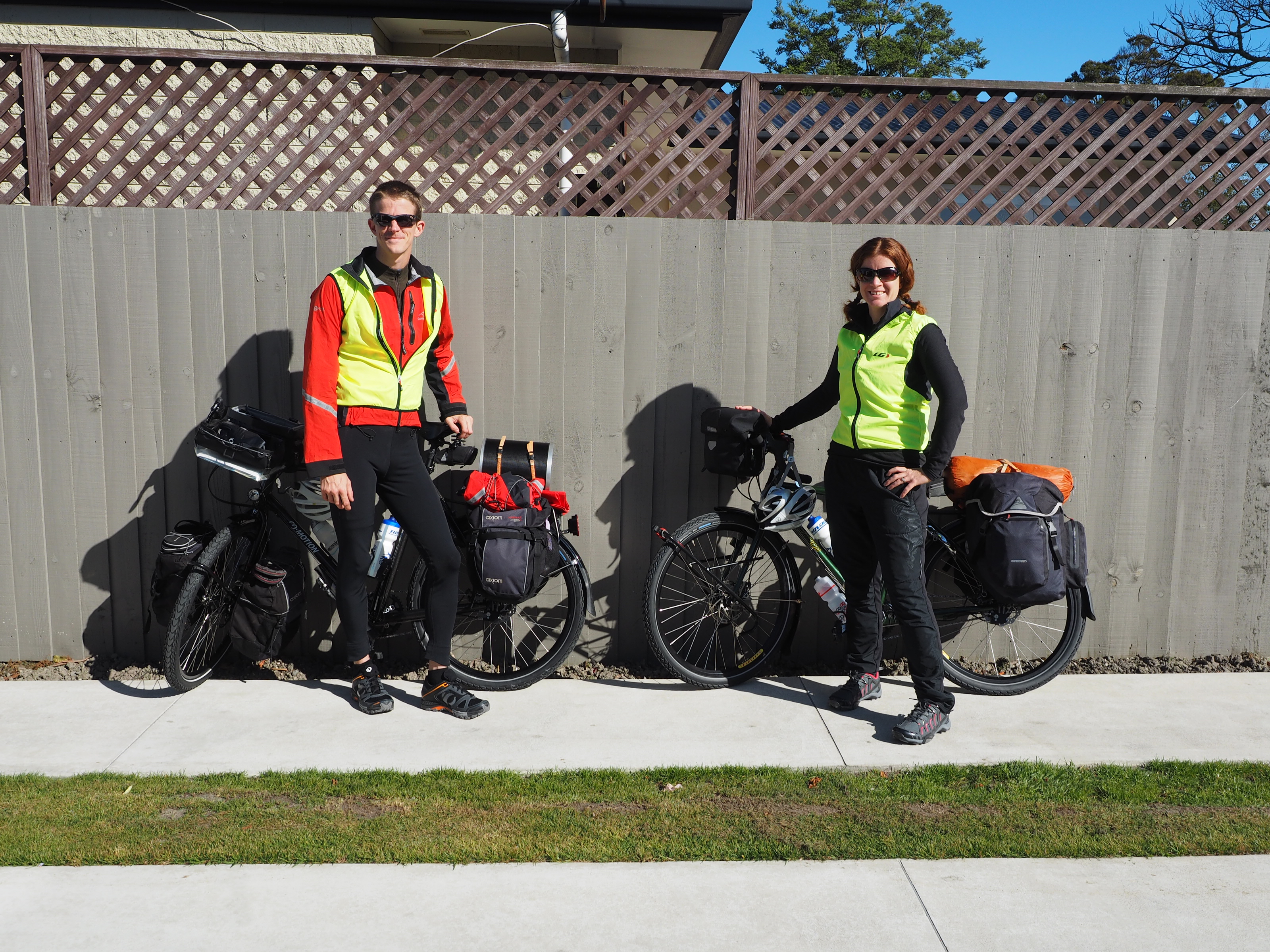I was reading through our most recent touring journal (haven’t read it yet? Check it out here!) and came across this situation:
Day 33: Fox Glacier to Hari Hari…Along the way we passed another touring couple who was clad in dark blue jackets, black pants, dark panniers, and had no lights. We were decked out in bright red jackets, neon yellow vests, and taillights that are extremely bright. Since it was raining we didn’t get to stop and chat, but afterwards Pam and I stopped and both shared how invisible they were riding up the hill. It just doesn’t make sense to us, why take the risk of not being seen? Drivers aren’t going to hit us because they didn’t see us…
Unfortunately, we see many riders, whether at home or abroad, who subscribe to this same attitude about visibility. We’ve already posted about this, but I thought I’d repost, as a reminder of where we stand on the issue.
High visibility: To wear or not to wear?
High visibility clothing, commonly referred to as “high-vis,” is a matter of contention among bicyclists worldwide. You can be pretty much be assured that every bicyclist has an opinion about whether or not to wear high-vis. Even government is getting involved. At the beginning of this year (2014), officials in New Zealand considered making it mandatory for all bicyclists to wear high-vis. Take some time to consider your visibility before you embark on that cycle tour.
So what is the big deal? Many bicyclists feel that high visibility clothing is uncomfortable, un-fashionable, and doesn’t actually help the bicyclist be seen. There also is the feeling that it is not their responsibility to stand out. Unfortunately none of the above matter when someone does not see you and you are hit/injured.
Modern high-vis comes in many shapes and sizes. Matt and I like to wear high-vis vests over our normal cycling clothing that we are wearing at the time. The vests don’t hinder our movement, have vents & mesh to keep us from overheating, and give us peace of mind that we are going to be seen. We even get compliments from drivers about how visible we are.
As far as fashion goes, we feel that this is a nonissue. We cycle not to look good, but for enjoyment and fitness and the ability to enjoy the outdoors. Most importantly we cycle to enjoy being alive. Wearing high-vis helps keep us visible to cars and distracted drivers, thus letting us live longer. These days there are many more fashionable versions of high-vis clothing and jerseys available to keep you visible while still fitting your fashion sense. However if you are looking for something cheap, not much will beat the construction vest.
Many studies have been done on this subject of visibility, mostly on the related subject of motorcyclists, and they come to varying conclusions. The consensus seems to be that contrast is the major factor in being able to see an object. Most cycle/auto interactions occur during rush hours and dawn/dusk/night, times when the number of cars is high and visibility is low. High-visibility clothing can help with that contrast. Lights also increase your visibility.
Of course, just being visible doesn’t mean you can’t be hyper vigilant and aware of the cars around you. After all, they are protected by a metal box, and you have nothing. Don’t take anything for granted, and pay attention to what’s going on around you at all times.
Think about it. Why not do everything in your power to make sure you are as safe as you can be? If this means wearing a high visibility vest, it is such small thing to do, and it may save your life. We’d rather be out there enjoying our bicycles than be injured or worse.
